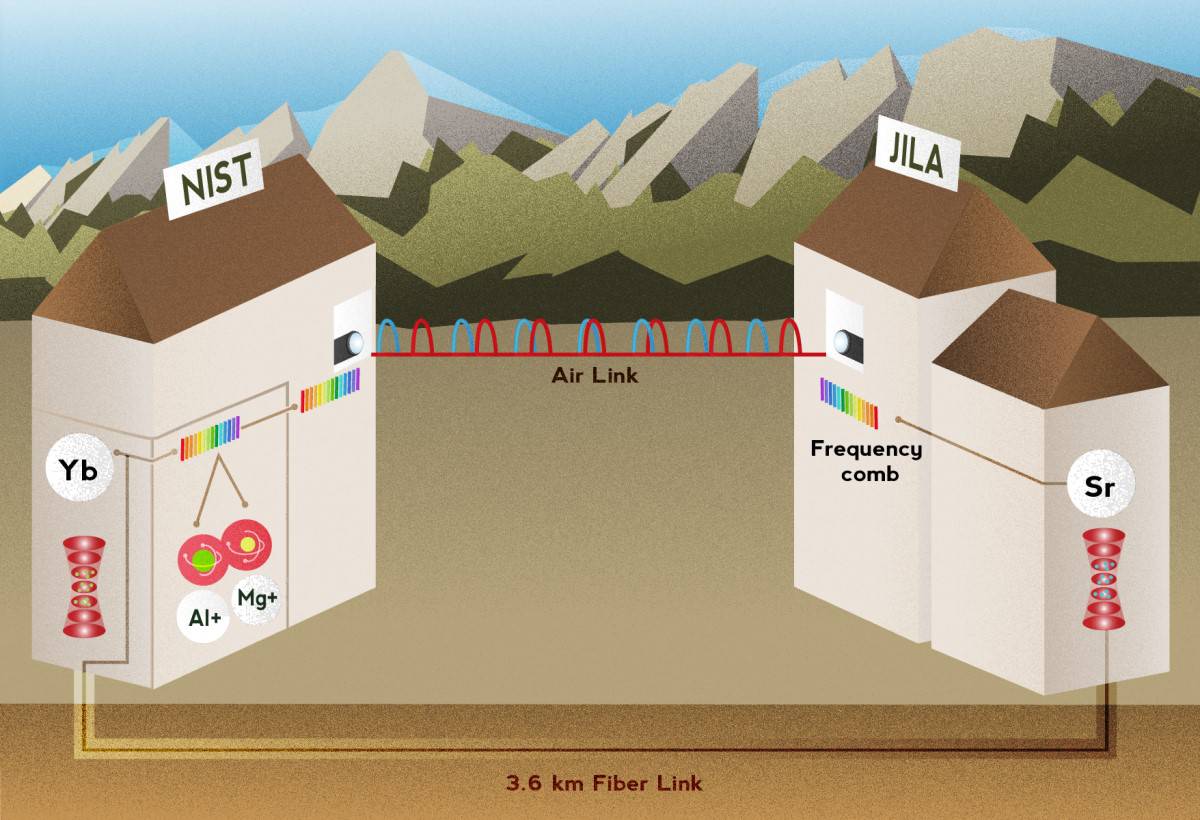
The time kept by three of the world’s best atomic clocks has been compared by connecting them using optical fibres and an over-air link. The comparisons were done by the Boulder Atomic Clock Optical Network Collaboration in the US and are ten times more accurate than previous attempts. The measurements have revealed unexpected variations in the time kept by the clocks, which could provide insights into how the devices could be improved. The research could play an important role in developing a new standard for the second, which would involve distributing and comparing atomic-clock time signals throughout the world.
Atomic clocks use the frequency of a specific atomic transition as an extremely stable time standard. While the second is currently defined by caesium-based clocks that operate at a microwave frequencies, physicists have built much more accurate clocks that are based on light. These optical clocks tick at much higher frequencies than microwave clocks and can keep time that is accurate to about one part in 1018, which is about 100 times better than the best caesium clocks.
The international metrology community aims to replace the microwave time standard with an optical clock, but first must choose from one of several clock designs being developed worldwide. To evaluate and improve these optical clocks – and ultimately create a global network of time standards – researchers must be able to compare their time signals. This can be done using an optical fibre connection or by transmitting optical signals through the air. Indeed, air transmission could play an important role in deploying optical clocks in satellites, where microwave clocks are currently used.
In this latest work, David Hume and colleagues at the US’s National Institute of Standards and Technology (NIST) and the University of Colorado have compared time signals of three optical clocks, which are all located in Boulder Colorado. One clock uses ytterbium atoms, another strontium atoms and the third a combination of aluminium and magnesium ions.
Frequency combs
A 3.6 km optical fibre link was used to compare the ratio of frequencies of the ytterbium and strontium clocks, which were located at NIST and the University of Colorado respectively. The strontium and aluminium–magnesium clocks (the latter located at NIST) were compared using a 1.5 km over-air optical link between two buildings. This involved the use of frequency combs, which allow signals at very different frequencies to be compared.
The over-air technique is also relatively immune to disturbances caused by turbulence in the air. Indeed, the team found that the fibre and free-space links offered similar levels of performance – the exception being when the free-space link was operated during a snowstorm.
The ytterbium and aluminium–magnesium clocks were in different labs at NIST and were compared using a fibre connection.
“State-of-the-art”
The team managed to measure ratios of frequencies of the three pairs of clocks at an accuracy of one part in 1018, which is an order of magnitude improvement on the previous record of one part in 1017. Hume describes the work as “state-of-the-art for both fibre-based and free-space measurements”. These ratios are natural constants, so the team points out that their results are the three most accurate measurements ever made of natural constants.
The clocks were compared over a period of several months and the researchers found unexpected day-to-day variations in their time keeping. This suggests that the team does not have a complete understanding of what affects the performance of the clocks – which means that further improvements could be possible.
As well as improving the definition of the second, better comparisons of optical clocks could benefit other branches of science. Two clocks at different elevations will run at slightly different rates and this could be used to measure tiny shifts in the Earth’s crust, caused for example by the melting of ice sheets or rising sea level. Differences between clocks could also be used to try to detect dark matter.
The measurements are described in Nature.
